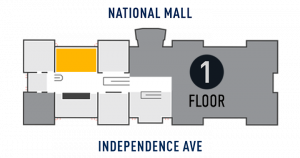Designed in 1930, the 14-cylinder, 597 kW (800 hp) Twin Wasp engine was first used in the Martin 130 China Clipper that inaugurated trans-Pacific commercial operations in 1935.
United Air Lines had 746 kW (1,000 hp) Twin Wasps installed in their Douglas DC-3As, which went into service in 1937. Other airlines also used Twin Wasp DC-3As, and 9,600 were built for the military as the C-47, C-53, and C-117 to become the principle transports used in World War II.
This version powered the Douglas C-47A, C-48, C-52, and C-53, all commercial or military versions of the DC-3. A total of 173,618 of all versions of the Twin Wasp engines were manufactured, including those for the World War II B-24 bomber, a number greater than any other large aircraft engine.
Display Status
This object is on display in America by Air at the National Air and Space Museum in Washington, DC.

Object Details
Date
Circa World War II
Country of Origin
United States of America
Type
PROPULSION-Reciprocating & Rotary
Manufacturer
Pratt & Whitney
Physical Description
Type: Radial, 14 cylinders, two rows, air-cooled, supercharger
Power rating: 895 kW (1,200 hp) at 2,700 rpm
Displacement: 30 L (1,828.4 cu in)
Bore and Stroke: 139.5 mm (5.5 in) x 139.5 mm (5.5 in)
Weight: 666 kg (1,467 lb)
Dimensions
3-D: 156.6 × 122.4cm, 664.5kg (61 5/8 × 48 3/16 in., 1464 15/16lb.)
Support: 121.9 × 215.9 × 121.9cm (48 × 85 × 48 in.)
Materials
Metal
Inventory Number
A19750478000
Credit Line
Gift of Grumman Aerospace.
Data Source
National Air and Space Museum
Restrictions & Rights
Usage conditions apply
For more information, visit the Smithsonians Terms of Use.